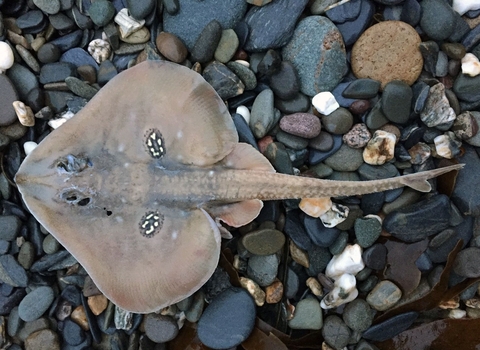
Graham Makepeace-Warne
Cuckoo ray
It’s easy to identify this distinctive skate from the black and yellow marbled eye spots on each wing.
Enw gwyddonol
Leucoraja naevusPryd i'w gweld
Present all year roundSpecies information
Ystadegau
Length: Up to 75 cmWeight: Up to 2.5kg
Average Lifespan: Can live for up to 8 years
The cuckoo skate is listed as Least Concern by the global IUCN Red List assessment but is categorised as Vulnerable in Ireland.
Test
Ynghylch
The cuckoo ray is able to feed on small crustaceans and worms, and sometimes fish using the crushing plates that replace teeth in its mouth. Young cuckoo rays are more commonly found further offshore, whereas adults are often found close to shore.Although it is commonly called the cuckoo ray, it is actually a species of skate (sometimes known as the cuckoo skate). Skates and rays are closely related and look similar, but you can spot the difference by looking at the tail. Skates have a short tail with small fins and no stinging capabilities, whereas rays have a long whip-like tail.
